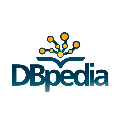CaLiGraph is a large-scale cross-domain knowledge graph generated from Wikipedia by exploiting the category system, list pages, and other list structures in Wikipedia, containing more than 15 million typed entities and around 10 million relation assertions. Other than knowledge graphs such as DBpedia and YAGO, whose ontologies are comparably simplistic, CaLiGraph also has a rich ontology, comprising more than 200,000 class restrictions. Those two properties - a large A-box and a rich ontology - make it an interesting challenge for benchmarking reasoners. In this paper, we show that a reasoning task which is particularly relevant for CaLiGraph, i.e., the materialization of owl:hasValue constraints into assertions between individuals and between individuals and literals, is insufficiently supported by available reasoning systems. We provide differently sized benchmark subsets of CaLiGraph, which can be used for performance analysis of reasoning systems.
翻译:CaLigraph是来自维基百科的大型跨域知识图,它利用了维基百科的分类系统、列表页和其他列表结构,包含1 500多万打字实体和大约1 000万份关系主张。除了DBpedia和YAGO等知识图外,CaLigraph还有丰富的本体学,其中包括20多万个等级限制。这两个属性――一个大的A箱和一个丰富的本体――使得基准推理师面临一个有趣的挑战。在本文中,我们表明,对CaLiGraph(即猫头鹰:Has Value限制个人之间以及个人与字体之间主张的内容)特别相关的推理任务没有得到现有推理系统的充分支持。我们提供了不同大小的CaLigraph基准子集,可用于对推理系统进行性能分析。




